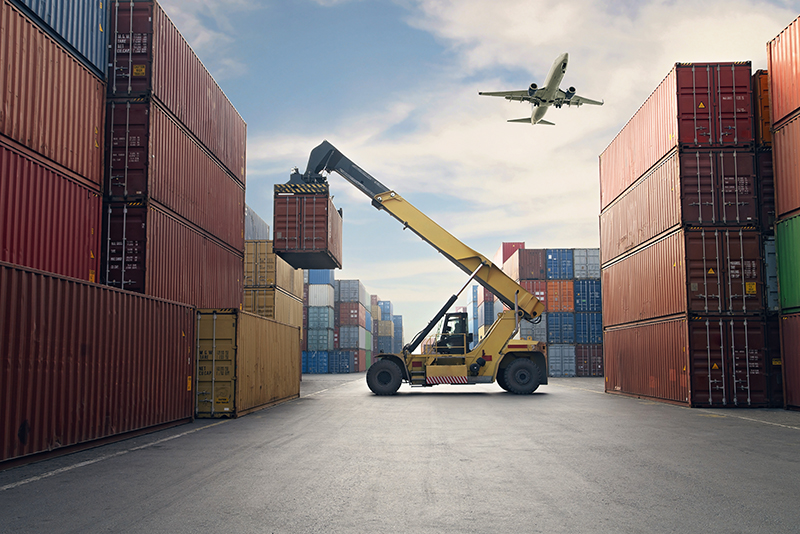Russian Glass Industry Faces Tough Times as Sanctions Take Toll

The Russian glass sector is experiencing tough times as the ever-tightening sanctions regime against the country and growing isolation in the international arena puts serious pressure on the industry, according to the Russian National Glass Union.
Ukrainian conflict ends growth trajectory for Russian glass industry
Prior to Feb. 24, 2022, the glass sector was one of the most developed segments of the entire Russian industrial production with an annual growth rate of more than 7-8%, according to the Russian Ministry of Industry and Trade. The growth of the industry was mainly due to successful implementation of two industry development programs, each designed for 10 years from 2000 to 2010 and from 2011 to 2020, which allowed the industry to more than double its output from 86 million square meters of glass to 246 million square meters in case of sheet glass.
Experts at the Russian Glass Union had predicted that output would exceed production figures of the USSR period, which peaked in 1985. Production at this time was at the level of 310 million square meters of flat glass annually.
However, the beginning of Russian-Ukrainian military conflict has not only put an end to the hopes of further growth for the industry, at least with the same growth rates, the conflict has resulted in the beginning of a serious glass industry crisis.
Russian production rates fall as exports decline
This is confirmed by both local producers and state officials. According to Natalya Popkova, Deputy Director of the Department of Metallurgy and Materials of the Ministry of Industry and Trade—a state agency which is responsible for the development of glass sector in the Russian government—last year the volume of glass production in Russia fell by 8% year-over-year. The decline is ongoing this year, while, according to some preliminary data, it will be substantially higher in 2022.
According to the state Ministry and local independent analysts, the main reason for this is the decline of exports, which traditionally accounted for the bulk of revenues for Russian glassmakers, as well as major glass industry companies. Many of these global companies, operating in the local market, suspended their operations in the country.
Facing Western sanctions, Russian glassmakers investigate Asian markets
If in the past Russian glassmakers exported up to 30% of their annual output abroad, then in recent months the situation has changed, while the supply of glass products has been almost completely suspended.
Historically, export prices for Russian glass in major Western markets were significantly higher than domestic prices. Russian glass export prices have also typically been higher than export prices from Asian markets, especially Chinese producers. Russian glassmakers are currently trying to re-orient glass sales towards the Asian market.
Viktor Osipov, head of StekloSoyuz, says export direction is very important for domestic glassmakers in Russia, and the lack of access to Western export markets will create serious problems for the industry in the long-term.
Russian glassmakers redirect attention to growing domestic market
In a recent interview with Russian “Sector Media” business paper, Osipov says that in order to return to “pre-crisis” sales volumes, it is necessary to stimulate consumption in the domestic market.
According to Osipov, one of the promising directions for stimulation of domestic consumption could be the domestic production of double-glazed windows. Based on average per capita consumption, Russia’s use of the systems is very minimal, not exceeding 3-5 square meters (compared to 23–25 square meters in the EU).
Prior to the current crisis, there was also a growing domestic demand for various types of glass in Russia, such as safety, sound-absorbing, heat-insulating, and tempered glass. As a rule, a significant part of technologies in the Russian glassmaking sector were supplied by West, with the rest coming from the country’s defense complex.
Due to the ongoing Russian-Ukrainian war and the current militarization of Russia (40% of state budget for 2024 will be allocated for defense) the military sector is expected to become one of the major customers for the Russian glassmaking sector in years to come, with the large demand for automobile glass, bullet-resistant glass and other types of glasses that could be primarily useful for the needs of Russian army.
In the meantime, while the Russian government is aware of the existing problems of the industry, it is seriously delaying the provision of any significant support for it. This is mainly due to the lack of funds in the Russian state budget and the tough business environment in the country.
From its side, the Russian government will be probably able to provide some tax and customs exemptions for the industry and provide assistance in the more active promotion of Russian glass and glass products in some new Asian export markets. Another option also involves the provision of various compensations and subsidies for the delivery of Russian glass products to Asia. According to data of Natalia Popkova from the Russian Ministry of Industry and Trade, this year such subsidies to the industry may reach $22 million. In addition, the government plans to launch a new large-scale program of residential housing construction in the country that will further grow demand for and consumption of glass in Russia.

